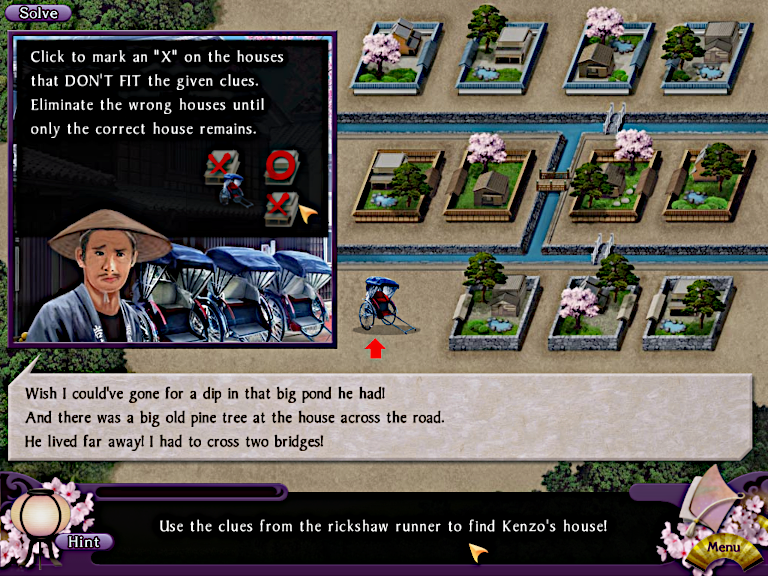|
Season of Mystery: The Cherry Blossom Murders
Year Published: 2009
Publisher: Square Enix
Developer: Square Enix
|
I am uncertain what prompted veteran video game company Square Enix, most known for their massively popular Final Fantasy RPG series, to make a hidden object game. The year 2009 was when this genre began taking shape and perhaps they just wanted to put their feet into it. Whatever the reason, I was hoping an entry from a powerhouse developer with a presumably much larger budget than the smalltime indie devs that typically crank these games out would exceed my expectations and knock my socks off. It's not that Season of Mystery is a bad game. It's okay for a HOG, but that's just it - it looks and plays like something that could've been made by any small indie dev in the business, and it's about as "2009" as it gets.

Irene's life is instantly turned upside-down.
In 1897, Irene Pemberton and her husband Richard have moved to Tokyo, as Richard is an attache at the United States Embassy in Japan. They live a happy dream life until a stormy night when Irene returns home to find her husband lying dead on the floor of his office. The local police intially rule his death a suicide because of a note left nearby. Irene, being unable to accept this, inspects the note and discovers her name is misspelled, convincing her that Richard didn't type it and that he was murdered. Irene begins her own investigation, which takes her to the embassy, some seedy warehouses, and...a lot of pretty Japanese gardens.
Strangely, this story is played completely straight. There is no magic, no steampunk elements, no talking animals or monsters, nothing supernatural or fantastic of any kind. It's a straight-up whodunnit in the vein of an Agatha Christie novel. This is odd coming from a dev (and a genre) known for fantasy, but it helps ground the rather farfetched story that involves kidnappings, murders, and art forgery - the latter being difficult to wrap one's mind around if you're not into the subject.

Process of elimination helps get you where you're going.
Irene's adventure is in late 19th century Japan, but it takes the form of a typical 2009 HOG. The backgrounds are static hand-drawn images with items spewed everywhere ("clipart barf" as I've dubbed it). There is very limited animation in some scenes, and it often takes the form of sunlight blooming in and out, which makes things harder to see. The converse is that some items are hidden in dark areas that are also hard to see.
Objects can be very tiny and/or blended exceptionally well with the backgrounds. It takes careful and persistent scrutiny to differentiate them. Maybe, since the whole point of a hidden object game is to find things that are hidden, this could be construed as a positive, but I'll bet many players will be reaching for the hint button.
The game includes a few easy puzzles, like reassembling torn notes, memory matching, and "process of elimination" like the one pictured above. There is some use of found items to solve puzzles, but that wasn't common yet in 2009 HOG's, so it doesn't happen often.

Pretty gardens and cats.
Season of Mystery does have the novelty of its setting. The garden and geisha house backgrounds are gorgeous. Square Enix is renowned for their soundtracks, and while this one isn't a must-hear, some music, like the "Japanese" theme, is impressive.
While there isn't a bonus chapter, players who bought the Steam version can earn achievements that may require a replay, especially the one for finding 1,000 objects. The basic game is always the same, but the items are somewhat randomized, so a replay doesn't feel like complete deja vu. The game is very short, so this also helps to get more out of it.

Pretty Geisha House.
And that's it for Season of Mystery. It's not the bold innovative experience I would've hoped for from Square Enix. It's just a mediocre one with some nice backgrounds and fun achievements. Released the same year as MumboJumbo's first Midnight Mysteries title, you could see the genre heading towards better things, but it wasn't quite there yet, and that game, despite being by a much smaller (almost no-name) company was still more innovative than this one.
SCORE: 2.5/5
|





